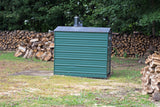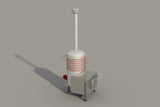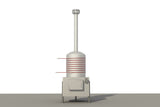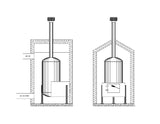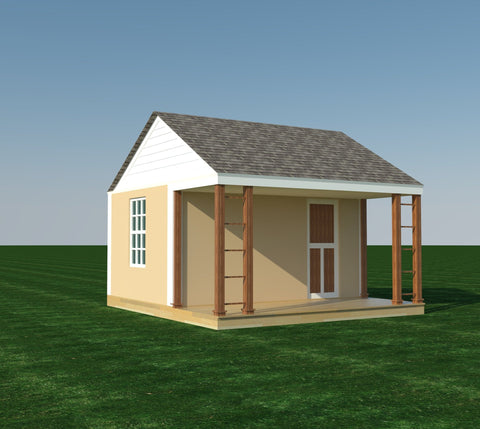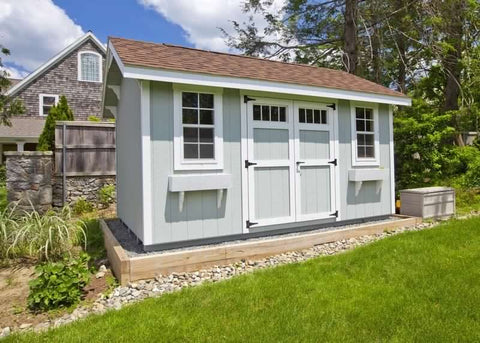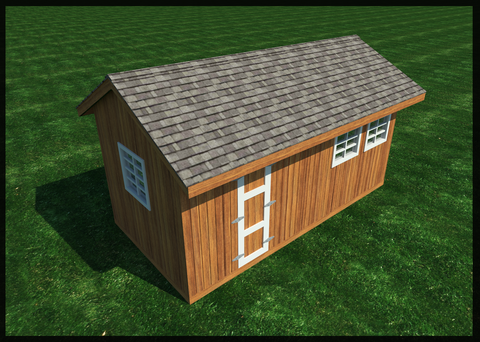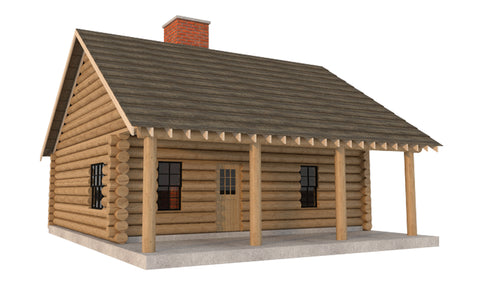Downloadable plans will be emailed to you immediately
IMPORTANT NOTE: These plans do require some welding. There are no step by step installation instructions as every jurisdiction has specific rules in place. You will receive the drawings to construct the heater. There are no drawings for the shed that houses it. The shed can be made yourself easily enough.
This central heat Outdoor Wood Furnace will heat an entire house and uses new or salvaged components for the firebox and standard galvanized framing for the outdoor housing. This design incorporates the best features of popular commercial units. Thermostat controlled with an automatic damper control and uses an automatic blower ducted from the housing. Once the coals are banked, recovery is quick on those cold mornings when the unit has been idle through the night. An auxiliary blower eases a cold start. The design is straight forward with easy to read drawings. The design includes the installation of a heater coil for hot water.
Please check with your insurance company as per their minimum distance requirements needed from your house as this may vary from your jurisdictions codes.
What is a Wood Burning Stove?
A wood-burning stove is a type of heating appliance that burns either wood fuel or wood-derived biomass fuel. Sawdust bricks may also be used. These stoves typically feature a solid metal, closed firebox lining, and one or more air controls to control air flow. There are many benefits to using a wood-burning stove, including reduced air pollution and a low maintenance cost.
Outdoor wood-burning furnaces
An outdoor wood furnace is a type of heat-generating appliance that can provide warmth for your home. These devices work by burning wood to produce syngas, a mixture of carbon and hydrogen. The syngas is then sent to exchange units within your home, which provide heat where you need it. You can also use an outdoor wood furnace to heat your garage or basement. It is important to consider the benefits of an outdoor wood furnace when considering whether to buy one.
Before building an outdoor wood-burning furnace, you must first obtain an Administrative Permit and submit a site plan that shows the proposed location of the furnace. The permit must be renewed annually. The location of your outdoor wood-burning furnace must be at least 300 feet away from the nearest occupied building. The chimney must extend two feet above the highest point of the dwelling or any other residence within 300 feet. If you violate any of these laws, you can face fines of up to $100. Each day that you violate these laws will count as a separate violation.
Hardwoods for wood-burning furnaces
Although all hardwoods and softwoods burn and produce heat, some burn better than others. Heat values are a way to gauge which firewoods are best for your furnace. The following are some of the best woods to use for your furnace. Read on to learn about their benefits and what you should know before you buy. Listed below are several types of hardwood and softwood that can be burned safely in your furnace.
Compared to softwood, hardwoods are heavier and produce more heat per unit of fuel. Hardwood logs are also less sticky than softwood, which means they produce less tar deposit in the flue. Hardwoods should be used in wood-burning furnaces if you want to heat your home for long periods of time. However, if you live in an area where hardwood is not readily available, it's a good idea to select softwoods instead.
Low maintenance wood-burning furnaces
Low maintenance wood-burning furnaces are the best choice for homeowners looking to reduce their heating bills. They're easy to install and require almost no maintenance. Installation requires setting the unit in place and hooking up the electric to run the blower and circulating pump. The appliance will also need water lines connected to an existing furnace, which will serve as a blower for the new system. The water lines can also be run to a water heater if you have one.
Indoor wood-burning furnaces can experience airflow issues if the home does not allow for free airflow. The warm air from the fire draws up the chimney, but cooler air must come in to replace it. If the airflow is obstructed or the furnace doors are closed too tightly, the fire may suffer. To remedy this, crack the windows in your home to allow fresh air into the fire, which will benefit both the fire and the occupants of the house.
All DIY plans are designed by Ben Stone. Ben is a retired Engineer in Canada. Ben also drafts these himself using the latest AutoCAD software to ensure accuracy. He studied Engineering back in the early 1980's. After over 30 years in the Construction industry he developed a passion for building cool items around his farm and cabin. These are great DIY projects. With a little skill anybody can Do It Yourself. Ben is always a email away if you have any questions while building one of his projects. He is adding new plans all the time.





